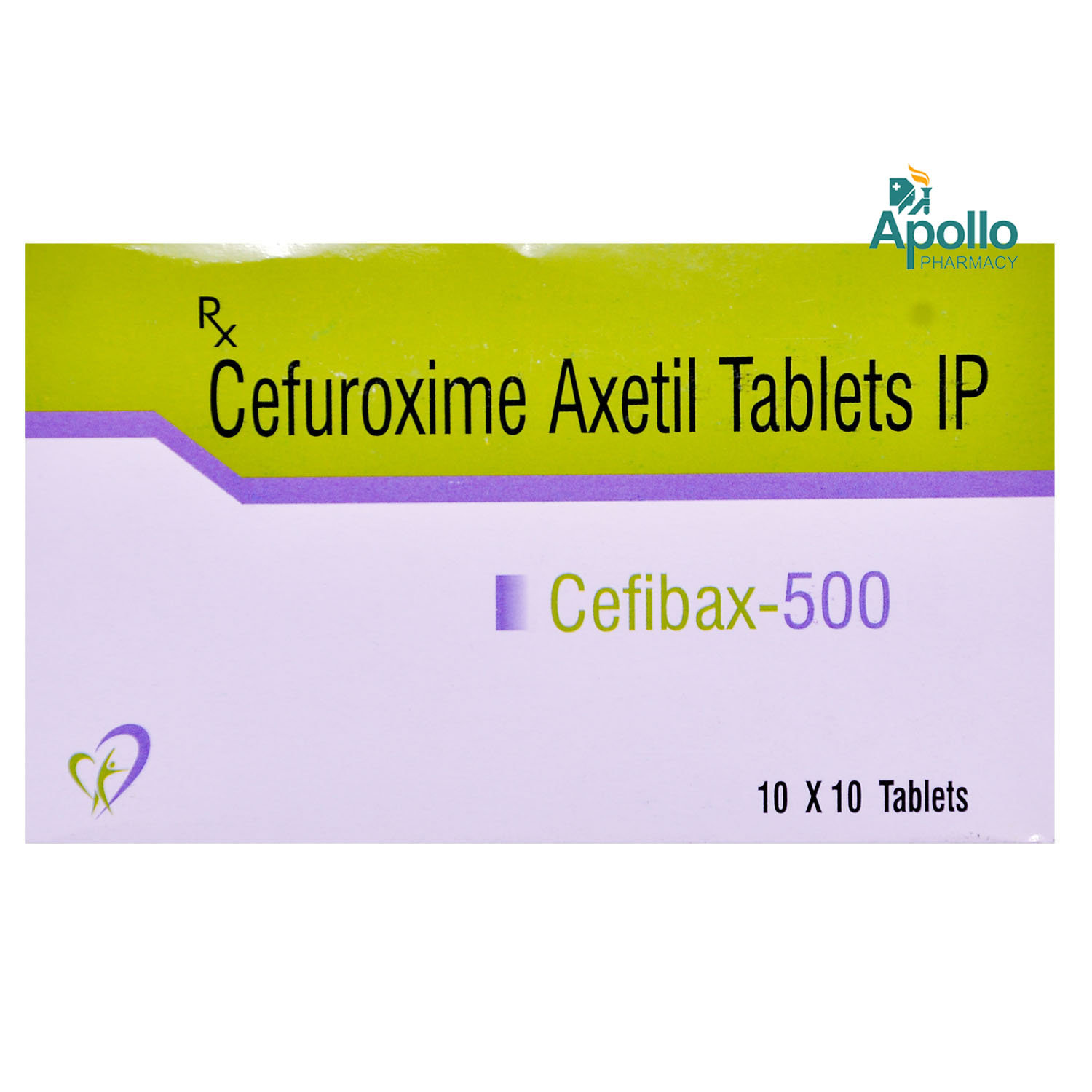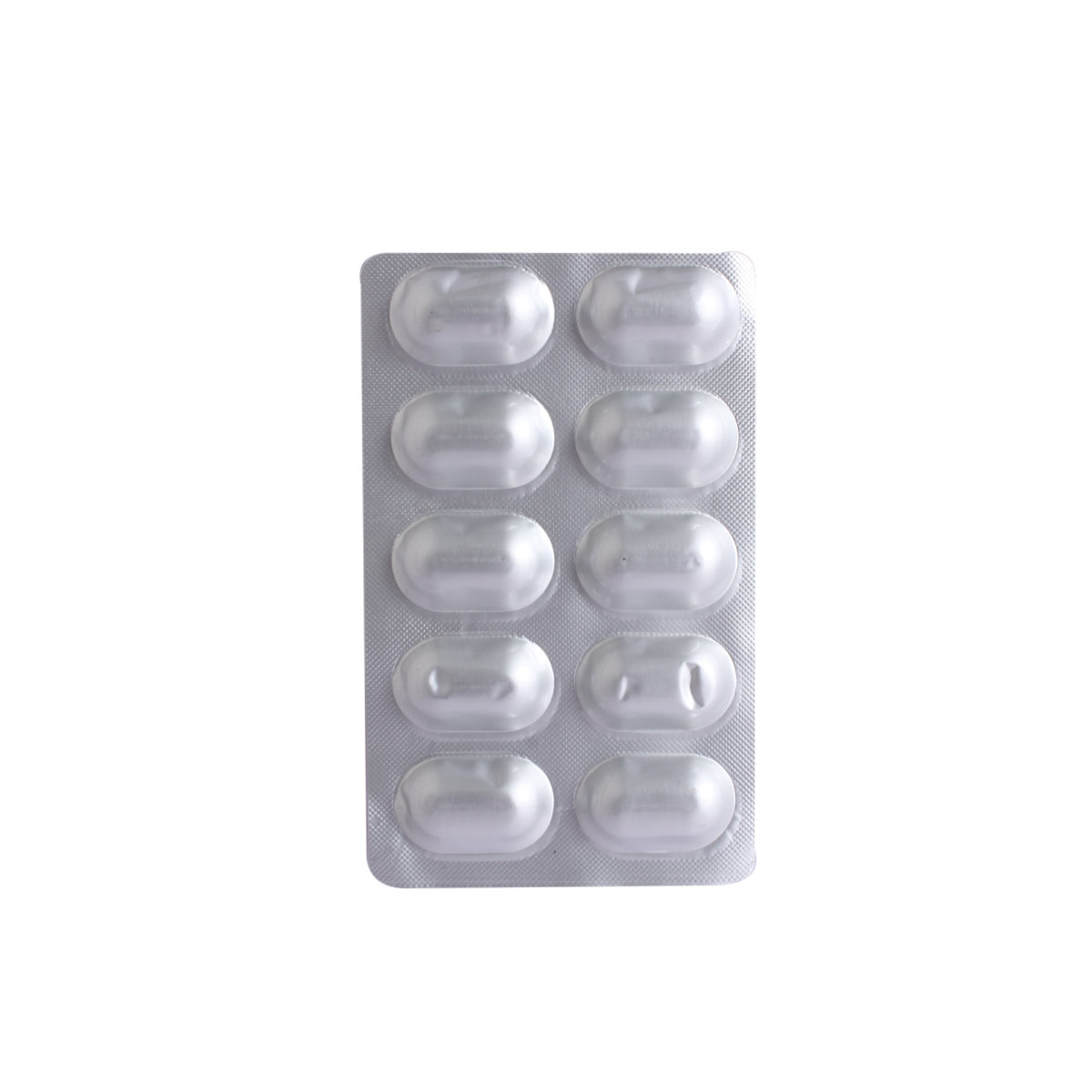Cefuroxime
About Cefuroxime
Cefuroxime belongs to the class of antibiotics known as cephalosporin, indicated for treating a wide range of bacterial infections. It helps in the treatment of urinary tract infections (UTI), Mild to moderate lower respiratory tract infections (bronchitis), severe lower respiratory tract infections (pneumonia), pyelonephritis (kidney inflammation due to the bacterial infection), uncomplicated gonorrhoea (sexually transmitted infection), Lyme disease (caused due to biting of infected black-legged tick insect) in adults and children above 12 years of age.
Cefuroxime is a broad-spectrum antibiotic that kills a wide range of bacteria (bactericidal). It kills the bacterial cell by binding to the outer layer of the bacteria and blocking the activity of the enzyme that makes peptidoglycan (a vital component of the bacterial cell wall). As a result, the bacterial cell cannot grow and multiply and finally gets killed.
You should take Cefuroxime only if your doctor has prescribed you. Cefuroxime is available in various forms, such as oral tablets, dispersible tablets, and oral suspension. Most bacterial infections get treated within one week, while some conditions might take longer. So, it would be best if you tried to complete the dose your doctor prescribed for the specific bacterial infection. During the treatment with Cefuroxime, you may observe some mild and transient nature of common side effects like headache, dizziness, stomach upset, overgrowth of candida (fungal skin infection), unpleasant taste in the mouth, diaper rashes, and eosinophilia (increased disease-fighting cells WBCs). These side effects are usually in the initial phase and then resolved after some time. However, if these side effects persist, let your doctor know about them.
Overdosage of Cefuroxime can cause brain problems (cerebral irritation with fits or convulsions attack). There is no clinical evidence of a Cefuroxime effect on the mother or baby during pregnancy. However, one should take the Cefuroxime with caution. Cefuroxime is excreted in the breastmilk, so the nursing mother should cautiously take Cefuroxime. This antibiotic may cause dizziness, so patients should be cautious while driving a motor vehicle or operating machinery. Cefuroxime is not recommended for people allergic or hypersensitive to Cefuroxime, penicillin, or other beta-lactam antibiotics. In the initial stage of the treatment, you might have diarrhoea and abdominal cramps due to loss of gut flora (good intestinal/gut bacteria that aids digestion). So, the doctor may prescribe you prebiotics or probiotics to increase the number of gut flora. You can drink alcoholic beverages while taking amoxicillin, as it does not interact with Cefuroxime. Liver and kidney-affected people should take this medication with caution.
Uses of Cefuroxime
Medicinal Benefits
Cefuroxime treats a wide range of bacterial infections caused due to gram-positive and gram-negative bacteria. It helps treat respiratory tract infections, ear infections, skin infections, genitourinary infections, and bone infections. Besides this, Cefuroxime also prevents in spreading of the infection after surgery and in the early treatment of Lyme disease caused by bacteria (Borrelia burgdorferi) in adults and children over the age of 12 years. The usual course of Cefuroxime is seven days (5-10 days). But, your doctor might prescribe you Cefuroxime for a longer duration depending on the condition of infection. Cefuroxime has excellent antibacterial activity against gram-positive and gram-negative bacteria, including Staphylococcus aureus, Haemophilus para influenza, Streptococcus pneumonia, S. pyrogens, Haemophilus influenzae, Klebsiella pneumoniae, Moraxella catarrhalis, and Neisseria gonorrhoeae.
Directions for Use
Storage
Side Effects of Cefuroxime
- Headache
- Dizziness
- Stomach upset
- Overgrowth of candida (fungal skin infection)
- Unpleasant taste in the mouth
- Diaper rashes
- Eosinophilia (increased disease-fighting cells/WBC)
Drug Warnings
Special care should be taken by the people taking Cefuroxime who have allergic reactions to penicillin or other beta-lactam antibiotics. Use with other antibiotics may lead to a fungal skin infection known as Candida. Prolonged use of Cefuroxime may also cause an overgrowth of other pathogens (like enterococci and Clostridium difficile), which can be prevented by stopping Cefuroxime. The case of colitis (inflammatory bowel disease) has been reported using Cefuroxime. Hence, it is important to consider the proper diagnosis of the patients who developed diarrhoea after taking Cefuroxime. If the symptom of diarrhoea persists for a longer duration, the patient may experience abdominal cramps. In this situation, you should discontinue the intake of Cefuroxime immediately. The Jarisch-Herxheimer reaction (caused due to toxins released by the death of bacteria within the body during antibiotic treatment) has been seen in the patients taking Cefuroxime for the treatment of Lyme disease. Your ability to perform tasks that require judgment, cognitive, or body movement may be affected, and you may have dizziness. So patients taking Cefuroxime should be warned to be cautious when driving or operating machinery.
Drug Interactions
Drug-Drug Interactions: You should avoid taking Cefuroxime with oral birth control pills, medicines that reduce gastric acidity (like antacids, omeprazole), immuno-suppressing drugs (mycophenolate or mycophenolic acid), medicines used for reducing uric acid (probenecid), and some urine glucose tests. Besides this, it also interacts with typhoid and BCG vaccines.
Drug-Food Interactions: Grapefruit juice and dietary supplements containing minerals like calcium may also work to dampen the effect of antibiotics.
Drug-Disease Interactions: Cefuroxime should not be given in the condition of colitis, kidney disease, patient planning for ferricyanide tests, patient on dialysis, liver disease, epilepsy (fits) and diarrhoea.
Drug-Drug Interactions Checker List:
Safety Advice

Alcohol
unsafeYou are recommended not to consume alcohol along with Cefuroxime.

Pregnancy
safe if prescribedCefuroxime is a pregnancy category B drug. So, Cefuroxime can be safely taken by pregnant women if prescribed by the doctor.

Breast Feeding
safe if prescribedCefuroxime is excreted in human milk, caution should be exercised. Your doctor will weigh the benefits and any potential risks before prescribing it to you.

Driving
cautionNo studies on the effects on the ability to drive and use machines have been performed. However, as this medicine may cause dizziness, patients should be warned to be cautious when driving or operating machinery.

Liver
cautionConsult your doctor, there is no substantial research yet on the use of Cefuroxime

Kidney
cautionConsult your doctor, there is no substantial research yet on the use of Cefuroxime

Children
safe if prescribedCefuroxime can be given safely to children provided dose has been prescribed by a child specialist. However, There is no clinical evidences of using Cefuroxime in children under the age of 3 months.
Habit Forming
Diet & Lifestyle Advise
- It would be best to take probiotics after taking the full course of Cefuroxime to restore some of the healthy bacteria in the intestine that may have been killed. Taking probiotics after antibiotic treatment can reduce the risk of antibiotic-associated diarrhoea. Certain fermented foods like yoghurt, cheese, sauerkraut and kimchi can help restore the intestine's good bacteria.
- Include more fibre-enriched food in your diet, as it can be easily digested by gut bacteria which helps stimulate their growth. Thus fibre foods may help restore healthy gut bacteria after taking a course of antibiotics. Whole grains like whole-grain bread, and brown rice, should be included in your diet.
- Avoid taking too much calcium enriched foods and drinks as it might affect the working of Cefuroxime.
- Avoid intake of alcoholic beverages with Cefuroxime as it can make you dehydrated and affect your sleep. This can make it harder for your body to aid the Cefuroxime in fighting off infections.
Patients Concern
Disease/Condition Glossary
A bacterial infection is a condition in which harmful bacteria enter, multiply and infect our body. It can target any body part and multiple very quickly. When you get infected with bacteria, you can experience generalized symptoms like fevers, chills, and fatigue. Bacteria are of various forms comprising commonly spherical, rod, and spiral-shaped. Bacterial infections vary from minor illnesses like sore throat and ear infections to severe brain infections like meningitis and encephalitis. Few harmful bacteria that cause infections include Streptococcus, Staphylococcus, and E. coli. Anyone can become infected with a bacterial infection. But, people with weak immune systems or taking immunosuppressive medicine can make you more prone to bacterial infection.
FAQs
Cefuroxime is a broad-spectrum antibiotic that kills a wide range of bacteria (bactericidal). It kills the bacterial cell by binding to the outer layer of the bacteria and blocking the activity of the enzyme that makes peptidoglycan (a vital component of the bacterial cell wall). As a result, the bacterial cell cannot grow and multiply and finally gets killed.
No, it is a prescribed drug, given by a physician for preventing specific medical conditions. Taking it on your own can cause unwanted side-effects.
You should avoid taking Cefuroxime with oral birth control pills, medicines that reduces gastric acidity (like antacids, omeprazole), immuno suppressing drugs (mycophenolate or mycophenolic), medicines used for reducing uric acid (probenecid), and some urinary glucose tests. Besides this, it also interacts with thyphoid and BCG vaccines.
Depending upon the severity of your medical condition your doctor may prescribe it to you daily for a specific duration. The usual dose ofCefuroxime is 7 days (5-10 days), but depending on your current infection state your doctor may extend your dose intake for more days.
Try to stay well hydrated by drinking at least 6 glass of water or other fluid per day. Keep your underwear clean and try to use underwear made of cotton to avoid the spread of infection. Always keep your bladder empty as much possible by peeing regularly. Your doctor may prescribe cranberry juice with antibiotics to treat urinary tract infection.
After taking an antibiotic you may need to wait for up to three hours for eating or drinking any dairy products include milk as well as butter, yoghurt, and cheese. Grapefruit juice and dietary supplements containing minerals like calcium may also work dampen the effect of antibiotics.
If you have taken accidently over dosage of Cefuroxime, you may have diarrhoea, nausea or vomiting. In rare cases it can also cause convulsion or seizures (fits). Try to reach out to doctor in this case.
No. Cefuroxime treats only bacterial infection. Cough, flu or cold are usually caused due to the viruses. So, you should consult doctor for these conditions.
Yes. Cefuroxime may interact with birth control pills and lowers its efficiency. So, you should tell your doctor if your are using any birth control pills.
No. You should complete the full course of Cefuroxime as your doctor prescribes. After completing the full course, the Cefuroxime will work. You must take Cefuroxime at the right dose, times, and for the right number of days.







